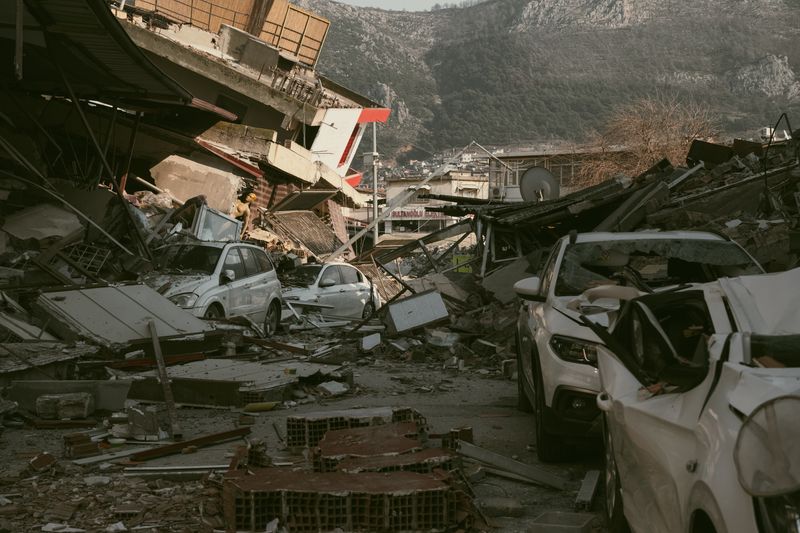Funnel Cloud Spotted in Beachville: Investigating the Potential Tornado
The Event and Preliminary Findings
On the evening of yesterday, a funnel cloud was spotted in Beachville, Oxford County, raising concerns about a possible tornado in the area. However, it is still unclear whether the funnel cloud actually touched the ground, warranting a detailed investigation. Environment Canada promptly issued a tornado warning for Oxford County, but it was later called off after approximately 30 minutes.
This incident also involved another funnel cloud being observed in Talbotville, northwest of St. Thomas, where it was confirmed to have touched the ground. The Northern Tornadoes Project, responsible for analyzing these weather phenomena, conducted an investigation in the St. Thomas area and established that it was an F0 tornado, the lowest classification on the Fujita scale.
Understanding Funnel Clouds and Tornado Formation
To make sense of these events, it is essential to grasp the process by which funnel clouds and tornadoes form. According to Warning Preparedness Meteorologist Steven Flisfeder, funnel clouds are created when an upper-low system exists in the middle atmosphere, a few kilometers above the ground. This system generates rotation within the environment. When a strong updraft from a storm at the surface interacts with this pre-existing rotation, it can spawn funnel clouds and potentially landspout tornadoes.
The Investigation and Future Outlook
The Northern Tornadoes Project will be dispatching investigators to Beachville today to examine the funnel cloud observed in that area. Their aim is to determine whether or not it made contact with the ground, potentially confirming the occurrence of a tornado. Flisfeder cautions that there could be further funnel cloud activity today, but the exact locations are yet to be determined. As such, Environment Canada will continue to monitor the situation closely.
Editorial: Greater Awareness and Preparedness
This recent weather event in Beachville serves as a reminder of the importance of being prepared and vigilant in the face of severe weather conditions. While Ontario may not commonly experience tornadoes, these occurrences are not entirely unheard of, and it is crucial for individuals and communities to remain aware of the potential risks.
Furthermore, it underscores the significance of investing in meteorological research and resources to better understand and predict these weather phenomena. The work undertaken by organizations such as the Northern Tornadoes Project not only enhances our understanding but also assists in improving forecasting accuracy, enabling communities to prepare and respond more effectively.
It is incumbent upon governmental bodies, at both the provincial and federal levels, to allocate adequate resources to support scientific research and the development of advanced meteorological technologies. By doing so, we can augment our ability to protect our communities from the destructive forces of nature.
Advice: Safety Measures and Community Engagement
In light of this recent event, it is essential for individuals to familiarize themselves with tornado safety measures and have contingency plans in place. Some critical steps to consider include:
1. Stay Informed:
Monitor local weather reports and stay tuned to official updates provided by Environment Canada, local authorities, or trusted news sources. Being aware of alerts and warnings allows individuals to take appropriate action promptly.
2. Create an Emergency Kit:
Prepare an emergency kit that includes essential supplies such as non-perishable food, water, flashlights, batteries, a first aid kit, and a battery-powered radio. This will help you stay self-sufficient in the event of a severe weather emergency.
3. Seek Shelter:
If a tornado warning is issued, seek shelter immediately. Ideally, move to a basement or an interior room on the lowest level of your home. If a basement is unavailable, take cover in a small, windowless interior room, such as a bathroom or closet, away from exterior walls and windows.
4. Develop a Communication Plan:
Establish a communication plan with your family or close friends, designating a safe meeting place and ensuring everyone knows how to reach each other in case of an emergency.
Remember, it is the responsibility of the entire community to be prepared and support one another. Reach out to neighbors, particularly those who may require assistance, to ensure they are aware of the situation and have the necessary resources available.
By prioritizing awareness, preparedness, and community engagement, we can minimize the potential consequences of severe weather events and protect the well-being of our communities.

<< photo by cottonbro studio >>
The image is for illustrative purposes only and does not depict the actual situation.
You might want to read !
- Severe Weather Alert: Tornado Warning Threatens Southern Alberta
- Bonnie Crombie Makes a Bold Move: Launching the Ontario Liberal Campaign in Mississauga
- Bell Media’s Massive Downsizing: 1300 Jobs Cut and Six Radio Stations Closed
- Lethbridge on high alert as tornado watch and warning issued
- “Can Spain Reclaim Victory against Italy in Nations League Semifinals?”
- France’s Bid to Woo Elon Musk: Push for Tesla Factory Amidst Crisis Calls
- TSN 1260 silenced: Bell Media’s layoffs rock Canadian sports radio landscape
- Canada: Evaluating Secretary Blinken’s Visit to China and the Path Ahead
- Eminem’s Daughter Alaina Scott Ties the Knot: A Celebration of Love and Family
- Untangling the Tragedy: Dissecting the Impact of Nathan Chasing Horse on Sonoma County Families
- Canadian Opposition MP Pierre Poilievre Calls for Resignation of Public Safety Minister, Prime Minister Faces Increasing Pressure




